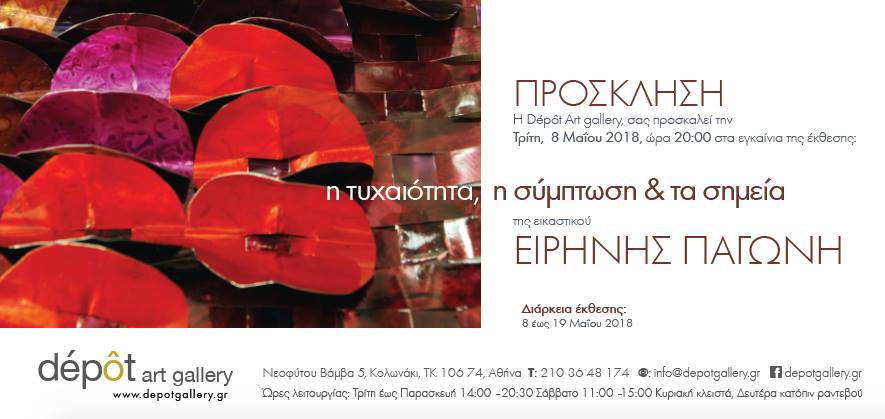CURRENT Athens is an online platform for the non-hierarchical promotion of contemporary art.
Tuesday-Friday: 12:00-20:30 / Saturday: 12:00-16:00
The first well-known proposition to consider randomness in terms of complexity was made known by Liebnitz in an obscure 17th century document revealed after his death. Liebnitz wondered how one could know if a set of points on a paper were randomly selected (egg splashing).
According to quantum theory, the universe consists of elementary particles interacting in known ways. Laplace (1749-1827) imagined an intellect that would know the location and speed of each particle in the universe and concluded that it would probably be able to know the future at any given time. Based on this assumption, nothing is unpredictable, and even human behavior and the future can be predicted by the information that the universe gives us at any given time. This predictability is called determinism. In 1927 Werner Heisenberg formulated the famous principle of "indeterminacy principle" or "uncertainty principle". According to this principle, it is impossible to measure with absolute precision the position and the speed of a particle at the same time. The principle of Heisenberg's indeterminacy is a fundamental, integral and characteristic feature of the world. (Hawking, 1996). The end of "predictable - determinism" and the beginning of "indeterminacy - randomness".
In 1960, Edward Lorenz, known for the butterfly phenomenon, as a poetic transfer of the theory of chaos, (chaos: when the present defines the future, but the approach here does not roughly define the future), encompasses random-randomness , the coincidence in theory, as a reiterated function system. The random one which has an order, although it sounds like an oxymoron, as "God does not play dices".
The coincidence-conjuncture, either as an universal phenomenon or as a phenomenon of everyday life, is nothing but randomities or expected incidents. It is the random, unexpected, simultaneous occurrence of two or more events or phenomena. In the everyday life has to do with psychology and chances. In the astrophysical science with probabilities, randomities and functions.
"The Point is Dimension Zero" (Euclid). The Pythagoreans, however, devote a great importance to the meaning of the point, and is in fact a cornerstone of their geometry, but also of their wider worldview. The same applies to all the geometries that have been created today and in which the definition of the point is an important theoretical issue. Beyond geometry, each point has two faces that resemble two faces of a sheet of paper: a view that is seen and called meaningful, and a face that does not appear and is said to mean.
...... I seek the knowledge, not the faith. Everything above is a small part of what I am-think, explore, wonder, question, being fascinated, that give me the power to work. My faith stems from discovery, not from revelation, although I often ripple between science and metaphysics, trying to reconcile these two "parallel universes" in my quest to turn the equations into poetry. The allegations in quantum strings.
That's what I believe I do through my visual work. I use aluminum sheets as my main canvas. I chose this material due to its ability to trap, liberate, reflect, change, transform, transfuse light, not only in the physical field but also in the ideological. The light, as a purpose of life, perception and position. My palette, almost monochromatic but in thousands of tons. My color always clear and transparent. I never make drafts, I never take notes. Not even when I have to write a text about something specific. Everything that floods my mind, I keep it in my mind, until I begin to realize everything. Until the time I get my brushes, or I'll hit the first key on my keyboard. The drafts and the notes are binding, restrictive situations, since ultimately as elements of the universe we are subject to the laws of randomness. I believe that what really needs to be done, through this process of chaotic randomness-order, will emerge. My forms are a synthesis of many, unlimited points. Many infinite points, fragmented, linked and synthesized in geometric or organic shapes, as if by coincidence, simultaneous occurrence of many events in a particular dimension.
The figures, which are part of the concept of this exhibition, have exactly the same logic, the same search, the same view as the "fragmented" ones. Imagine these small-dimensional works on plexiglass, these figures, to be fragmented and then reconnected, of course in much larger dimensions. "The ONE is ALL," let us not forget that.
Eirini Pagoni - Louti

